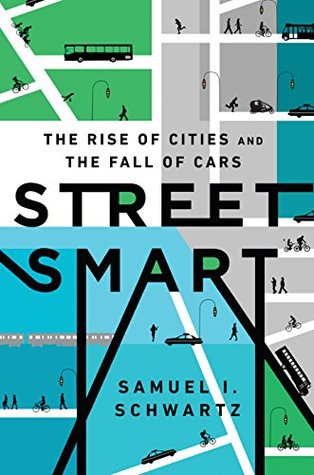More on this book
Kindle Notes & Highlights
Read between
May 27 - June 12, 2018
Motordom wanted streets converted from open spaces available for commercial and recreational uses to one thing and one thing only: arteries for motor vehicles.
The fact that crankiness is a frequent result of commuting by car more than about twenty-five minutes each way isn’t really in dispute.
Longer commutes are associated with higher blood pressure and more frequent headaches.
Social cohesion and trust are improved just by living in a place with less traffic.
The basics of Complete Streets should sound familiar by now: sidewalks, crosswalks, curb cuts, traffic calming, dedicated bike lanes and bike parking, dedicated bus lanes.
New York’s success at promoting walking and biking wasn’t achieved without friction. This is New York we’re talking about, after all, though the action-reaction sequence is so universal that it’s practically a law of transportation engineering. Step one: a pedestrian plaza is proposed. Step two: local merchants and residents object, sometimes ferociously. Step three: the street is pedestrianized. Step four: the merchants’ businesses are not destroyed, but enhanced. Step five: hardly anyone can remember what the original objections were, and even fewer of them would willingly return to the
...more
Zurich is probably the most transit-friendly city in the world.
Zurich is what it is because it decided, not so very long ago, to end its dependence on, and addiction to, the automobile. Or, more accurately, addiction to parking.
In study after study, dating back to 1927, an average of 30 percent of the cars in America’s congested downtowns are cruising for a curb parking space;
Restricting the number of street parking spaces opened up the streets to other uses.
A survey of Chicago-area commuters unsurprisingly concluded that awareness of, and experience with, real-time transit information increased ridership, especially among infrequent users of the transit system.
With its combination of traditional buses, bus rapid transit, streetcars, and light and heavy rail, Salt Lake City may have the most multimodal transit system in the United States. It might even be the best large public transportation system in North America.
Transportation policies that segregate people by income or education aren’t just unfair, they’re self-defeating.
Public transportation works only when it’s used by every segment of the public. When it’s equitable. When it’s transportation for everybody.
In the view of former PRT advocate Alain Kornhauser, who is now convinced of the practicality of street-useful driverless cars, the beauty of these technological improvements is that, because they increase driving safety, they even have the potential to be self-financing: so long as collision avoidance and other autonomous driving modules cost less than the potential liability from future accidents, it will be in the interest of automobile insurance companies to pay for them.
As hardly needs underlining, the environmental and social benefits of taking 90 percent of existing cars off the streets are almost incalculably high.


